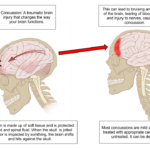Overview of Conditions:
Chronic mechanical neck pain refers to ongoing discomfort in the cervical spine region that persists for more than three months. This condition often results from musculoskeletal imbalances, degenerative changes in the cervical spine (e.g., facet joint osteoarthritis, degenerative disc disease), postural issues, and prolonged low-level stress or poor ergonomics. Over time, the pain may become more persistent and disabling, leading to functional limitations, muscle weakness, and stiffness. In some cases, this condition may be exacerbated by lifestyle factors, stress, and inadequate posture.
Prevalence and Etiology: Chronic neck pain is a common condition, affecting approximately 10-20% of the adult population. Factors like poor posture, repetitive strain, trauma (e.g., whiplash), and degenerative changes in the spine contribute significantly to its onset and persistence (Barker et al., 2022).
Assessment and Evaluation:
- History:
- Onset and Duration: Chronic neck pain typically lasts for more than 3 months. Ask about the onset (gradual or sudden) and progression.
- Pain Location and Radiation: The pain may be localized to the neck or may radiate to the shoulders, upper back, or arms. Assess the nature of radiation.
- Aggravating and Relieving Factors: Posture, prolonged sitting, certain movements, or activities may aggravate the condition.
- Previous Interventions: Determine past treatments (e.g., medications, physiotherapy) and their effectiveness.
- Pain Assessment:
- Use the Visual Analog Scale (VAS) to assess the intensity of pain.
- Neck Disability Index (NDI) to assess the impact of pain on daily activities.
- Postural and Biomechanical Assessment:
- Assess for forward head posture, rounded shoulders, or any signs of kyphosis.
- Examine the alignment of the cervical spine and surrounding musculature.
- Observe any signs of muscle imbalances or weakness.
- Range of Motion (ROM):
- Measure both active and passive cervical movements (flexion, extension, rotation, and lateral flexion) to assess any limitations or pain provocation.
- Compare with normal ROM values and identify areas of restriction or pain.
- Strength and Palpation:
- Palpate cervical muscles (upper trapezius, levator scapulae, suboccipital muscles) for tightness or trigger points.
- Perform strength testing for deep cervical flexors and extensors.
- Assess for signs of muscle weakness or imbalance.
- Special Tests:
- Spurling’s Test: To assess for radicular symptoms and nerve root involvement.
- Cervical Compression/Distraction Tests: To assess joint mobility and nerve compression.
- Provocation tests: To assess for facet joint involvement or ligamentous instability.
Goal Setting:
Short-Term Goals:
- Reduce pain and discomfort.
- Increase cervical range of motion (ROM) and decrease stiffness.
- Alleviate muscle spasms and reduce trigger points.
- Educate on posture correction and ergonomic practices.
Long-Term Goals:
- Restore normal neck function and mobility.
- Strengthen the cervical musculature to prevent future episodes of pain.
- Improve postural awareness and endurance.
- Prevent recurrence of neck pain through self-management strategies.
Recommended Treatment:
Electrotherapy:
- Transcutaneous Electrical Nerve Stimulation (TENS):
- Indication: Pain relief and reduction of muscle spasm in chronic cases.
- Parameters:
- Frequency: 80-120 Hz (conventional mode for pain relief).
- Intensity: Comfortable, sub-threshold to strong stimulation (patient dependent).
- Pulse width: 100-300 µs.
- Duration: 20-30 minutes, 3-4 times per week.
- Mechanism: TENS reduces pain by stimulating the sensory nerves to block nociceptive signals through the Gate Control Theory and promotes endorphin release.
- Interferential Therapy (IFT):
- Indication: For deep tissue pain relief, muscle relaxation, and inflammation control.
- Parameters:
- Frequency: 4,000 Hz carrier frequency, modulated at 80-150 Hz for chronic pain.
- Duration: 20-30 minutes.
- Mechanism: IFT stimulates deep tissues and increases blood circulation, reducing pain and muscle spasms in chronic neck conditions.
- Class 4 LASER Therapy:
- Indication: To reduce inflammation, pain, and promote tissue healing in chronic conditions.
- Parameters:
- Wavelength: 800-900 nm for optimal deep tissue penetration.
- Power: 5-10 W.
- Duration: 5-8 minutes per treatment area.
- Mechanism: LASER therapy enhances cellular regeneration, collagen production, and circulatory function, leading to a reduction in inflammation and pain while promoting healing in the tissues.
- Ultrasound Therapy:
- Indication: To target deep tissue, reduce stiffness, and promote muscle relaxation.
- Parameters:
- Frequency: 1 MHz for deeper tissue penetration.
- Intensity: 0.5-1.0 W/cm².
- Duration: 5-10 minutes per area.
- Mechanism: Ultrasound generates thermal effects in deep tissues to enhance circulation, reduce muscle tension, and facilitate tissue repair.
Thermotherapy:
- Moist Heat Packs:
- Indication: For chronic muscle stiffness and pain relief.
- Application: Apply moist heat for 20-30 minutes to affected areas.
- Mechanism: Heat increases blood flow to the muscles, promotes tissue elasticity, reduces muscle tension, and helps with pain relief.
Manual Therapy:
- Myofascial Release:
- Indication: To relieve chronic muscle tightness and trigger points.
- Technique: Apply sustained, gentle pressure over the affected muscle areas, such as the upper trapezius and levator scapulae, to release tension.
- Mechanism: Myofascial release promotes blood flow, breaks up fascial adhesions, and relaxes tense muscles.
- Muscle Energy Techniques (MET):
- Indication: For improving range of motion and reducing muscle tightness.
- Technique: Apply a controlled isometric contraction of the affected muscle followed by a gentle passive stretch.
- Mechanism: MET utilizes autogenic inhibition to relax tight muscles, enhance ROM, and relieve chronic stiffness.
Exercise Therapy:
- Stretching:
- Exercise: Perform gentle neck stretches to maintain and improve ROM. Include cervical flexion, extension, side bending, and rotation stretches.
- Duration: Hold each stretch for 30 seconds, 3 repetitions, 3 times per day.
- Strengthening:
- Exercise: Isometric exercises for cervical flexors, extensors, and lateral flexors (hold for 5-10 seconds).
- Reps: 10-15 repetitions per muscle group, 2-3 sets daily.
- Endurance: Focus on strengthening the deep cervical flexors to support posture and reduce muscle fatigue.
- Postural Correction:
- Exercise: Educate on proper sitting, standing, and sleeping postures.
- Exercise: Strengthen postural muscles such as the upper back and cervical extensors using exercises like shoulder blade squeezes and chin tucks.
Precautions:
- Electrotherapy:
- Avoid in patients with pacemakers, implanted devices, or other electrical implants.
- Ensure TENS intensity is adjusted to avoid discomfort or skin irritation.
- Thermotherapy:
- Use caution in areas with acute inflammation. Avoid heat application in patients with recent injuries or skin conditions.
- Manual Therapy:
- Avoid high-velocity techniques in patients with significant degenerative changes or severe pain.
- Use gentle mobilizations and stretches during the acute phase to avoid exacerbating pain.
- Exercise Therapy:
- Ensure exercises are performed pain-free. Avoid overexertion, particularly during the early stages of rehabilitation.
- Advise on ergonomics and posture to prevent further strain on the neck.
Reassessment and Criteria for Progression/Change in Care Plan:
- Pain and Function:
- After 2-3 weeks, reassess the patient’s pain level and functional status. Improvement of 2-3 points on the VAS scale is expected.
- If pain persists, consider re-evaluating the diagnosis for underlying pathologies or complicating factors (e.g., radiculopathy, disc herniation).
- Range of Motion (ROM):
- Monitor improvements in cervical ROM and aim for 80-90% of normal ROM by 4-6 weeks of treatment.
- Strength and Posture:
- Reassess cervical muscle strength and postural alignment after 4-6 weeks. Improvements in endurance and muscle strength should be evident.
- Progress to more advanced strengthening exercises once the pain subsides and ROM is restored.
- Discharge Criteria:
- Once the patient achieves near-normal ROM, strength, and functional independence, and pain is reduced to manageable levels (VAS ≤ 2), discharge from treatment is possible.
References:
- Barker, L., et al. (2022). “The epidemiology of chronic neck pain.” Journal of Musculoskeletal Pain. 30(1), 1-13.
- Côté, P., et al. (2023). “Chronic neck pain and disability: A review of treatment options.” Spine Journal, 43(8), 1087-1099.
- Cleland, J. A., & Childs, J. D. (2022). “Physical therapy management of musculoskeletal conditions.” Journal of Orthopaedic & Sports Physical Therapy, 52(5), 317-326.
Note: Treatment options should be selected appropriately based on the individual’s condition. For example, TENS or IFT can be chosen based on availability and suitability, and similarly, ultrasound or LASER therapy can be used according to the clinical need.
Disclaimer: This content is for informational purposes only. Always consult with a qualified healthcare provider for diagnosis and treatment recommendations tailored to individual needs.






